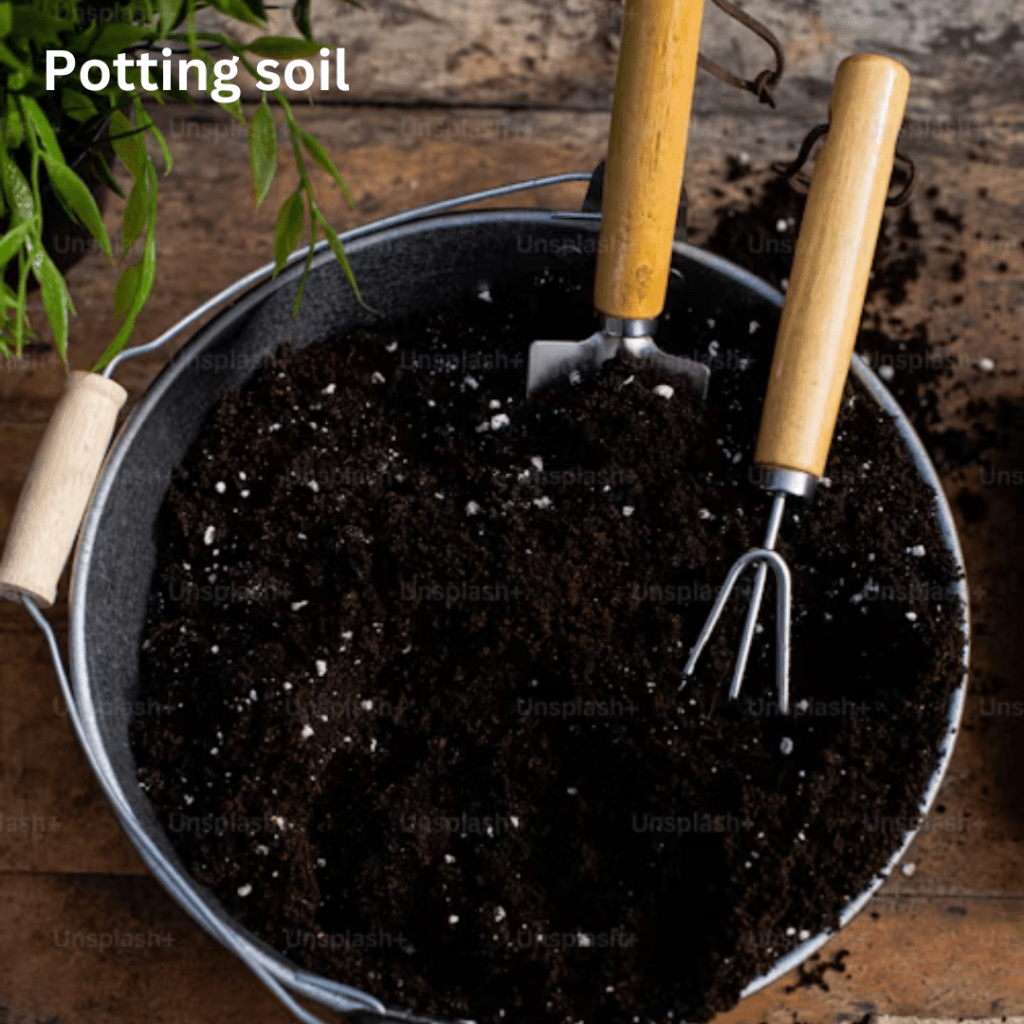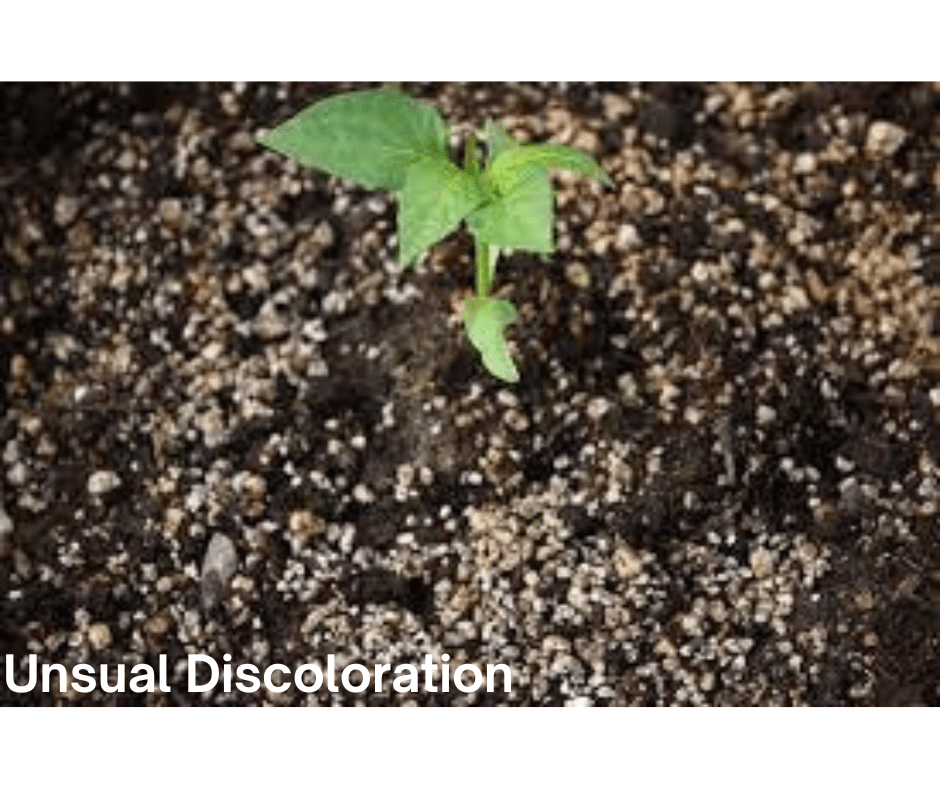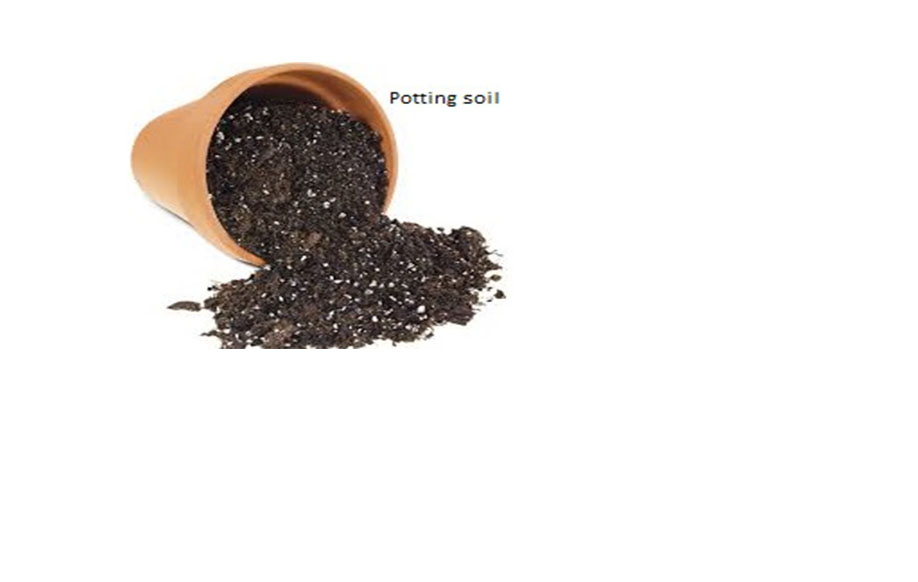Understanding Potting Soil Shelf Life
As with other organic substances, potting soil also has a shelf life. To ensure the health and vitality of your plants it is crucial to understand the shelf life of potting soil. Planting soil can be viable for one or two years considering different factors.
The main factors that shape the shelf life of the soil is the composition of the soil. Good quality soil contains a blend of organic matters like peat or fertilizer, mineral or perlite, phlogopite, good air circulation, watering practices, and drainage. With time these ingredients disintegrate and break down, lose their productivity, and can not provide necessary nutrients to the plants.
Furthermore, Sunlight or direct light, exposure or vulnerability to moisture, and frequent fluctuations in the temperature, environmental conditions, or exposure to extreme heat or extreme cold conditions can also affect the effectiveness of the potting soil. Microscopic or infectious activity can also affect the quality of the soil and reduce the ability to grow plants.
Inspecting soil is one of the most important steps in growing plants. Check the expiry of the potting soil before use. Additionally, check the potting soil for any spoilage, unusual discoloration, mold growth, or foul odors. Usage of expired or decayed soil can badly affect the growth and health of the plants and can lead to root rot, pest infections, or undersize growth.

Factors Affecting Potting Soil Longevity
Many factors and elements can affect and influence the quality and longevity of the soil, which can impact the effectiveness of potting soil in fostering the plants.
Quality of Ingredients In The Potting Soil:
The quality of organic components and ingredients is essential in the soil. Good quality ingredients like compost, perlite, phlogopite, and peat moss can form a good potting soil and increase the lifespan of the soil. These high-quality ingredients degrade slowly and can prolong the lifespan and usability of the potting soil.
Also Read:
Storage Conditions:
To use potting or dirt soil for longer, it is necessary to store it in proper and suitable conditions. Extreme conditions, frequent fluctuation in temperatures, direct light, or heavy exposure to sunlight can deteriorate the soil fast and degrade its quality.
Store the soil in a cool, drained, or dry place, and away from sunlight. These practices can extend the lifespan of the potting soil.
Microbial Activity:
Microorganisms in the potting soil can cause the degradation of the soil over time. It is necessary to control, factors like moisture levels, temperature, presence of organic matter to influence microbial activity. Identifying and Managing these factors regularly can help slow down the decomposition and degradation of the potting soil.
Frequency of Use:
Restocking, refilling, or replenishing the potting soil can help increase the health of the soil to its optimal condition and maintain good nutrient levels and soil structure. Reusing the soil without any refilling, change, or amendment can cause nutrient sapping, and condensing, and can lead to deterioration of the health of the soil.
Aeration and Drainage:
Good air circulation, proper aeration, good watering practices, and drainage are essential to maintain the quality and health of the soil. Condensed, compacted, or flooded soil can slow down the growth of the plants and cause anoxic conditions.
This problem will cause degradation, and decomposition and will lead to nutrient loss. So proper drainage of the potting soil is necessary to keep the soil healthy and reuse it for the long haul.
Comprehension and understanding of these basic factors of the soil can help plant lovers make good decisions and use the soil properly. These factors can help the gardeners, to manage the soil health and the ability of plants to nurture for a long time and can maximize the effectiveness of the soil.
Signs of Potting Soil Spoilage
Some signs can indicate decay, decomposition, or spoilage in the soil and can affect the health of the plants. Identifying these signs can indicate the bad health of the soil and controlling them can help you manage the health of both, the soil and plants.
Foul Odors:
Mold, Mildew, or the presence of any other harmful bacteria can negatively impact the health of the soil and your plants. You can identify it by checking the odor of the soil. If the potting soil product unpleasant and strong smell, it may indicate the presence of harmful bacteria.
Mold Growth:
Mold growth is another indicator that spreads on decaying organic ingredients. It may arise on the surface of the soil or the borders of the holder or container. Mold growth is a clear sign of potting soil spoilage and can reduce nutrients and oxygen in the soil, which will lead to deteriorated health or death of the plants.
Unusual Discoloration:
Healthy potting soil has the same color and texture. The unusual rise of mold or discoloration of the soil such as dark stains, patches, or spots can indicate the bad health of the potting soil and it can be an indicator of the presence of fungal or bacterial infections.

Presence of Pests:
The presence of insects is another big threat to the quality and health of the potting soil. Fungus, springtails, or larger pests can infect and spoil potting soil. This will cause different diseases and problems in the plants like leaf curling in the bird of paradise.
These insects can cause damage to the roots of the plants, spread diseases, and decompose the quality of the soil.
Compacted or Clumpy Texture:
With time, potting soil can become decomposed, compacted, or condensed and the texture of the soil can become clumpy. This will obstruct the growth of roots and plants and will hinder water penetration. Degraded soil will slow down aeration which will lead to anoxic and is very dangerous to the plant’s health.
Lack of Nutrients:
Proper and regular inspection of the potting soil is necessary to check the level of essential nutrients for plant growth. Expired soil or degraded soil may lack the necessary ingredients which will ultimately affect the plant performance. Testing and inspecting soil regularly can help avoid these problems.
Timely inspection and regular attention to soil health can help you take action to treat the soil on time and maintain the health of the soil and plants. In case of notice any of these signs or indicators, ponder replacing the potting soil, renovating, restoring, or rejuvenating it.
Proper Storage Practices for Potting Soil
Good and proper storage is essential to preserve potting soil’s quality and health and extend its lifespan. These are some simple guidelines to follow to extend the lifespan of the potting soil.
Keep The Potting Soil Dry:
Store soil in a bag, or container to keep it dry. Save it from moisture, as it is the enemy of potting soil. Prevent potting soil from absorbing moisture which will cause the growth of mold and decompose the soil. Potting soil can absorb moisture from the ground, so do not store it directly on the ground.
Protect from Sunlight:
Do not expose the soil to direct sunlight. Sunlight can cause degradation of the organic ingredients which will deteriorate the health of the soil. Store the potting soil in a dry bag or container covered from direct or sunlight. Store it in a shaded area. If the soil is stored outdoors, cover it from the sunlight to save it from UV rays.
Seal Containers Properly:
If you are storing the soil in a resealable bag or container, ensure is properly sealed and can prevent air and moisture from entering. This will help you keep the quality and health of the soil for a longer time and will help you save the soil from fast degradation.
Avoid Extreme Temperatures:
Potting soil can maintain its health and quality at 50°F and 70°F (10°C to 21°C) for a longer time. Avoid storing potting soil in conditions fluctuating frequently, or places exposed to extreme temperatures such as extreme heat or cold.
Avoid storing soil in attics or basements, rather store it in a location with stable condition. Fluctuating temperatures and conditions can badly affect the soil and cause microbial activity which will increase degradation.
Use Air-Tight Containers:
Use air-tight bags or containers to store potting soil. use plastic bins with tight-fitting lids. This will help protect the soil from pests, moisture, and extreme conditions and will help maintain the quality and health of the potting soil for longer.
Following these sample storage methods and techniques can help you prolong the lifespan of potting soil and ensure effectiveness in the usage of the soil in gardens and plants in the coming years.
Extending the Lifespan of Potting Soil
To extend the lifespan of your soil and maximize its effectiveness in nurturing plants, consider the following tips:
These tips and tricks are very useful to maximize the lifespan and effectiveness of the potting soil:
Amend with Compost:
Compost, peats, or humus can help replenish nutrients in the soil and improve its structure which will extend the lifespan of the soil and make it able to nurture plants. Use peat as dressing for the soil or mix in it to increase the quality and source of nutrients.
Rotate Soil in Containers:
To prevent the degradation and decomposition of the soil, rotate the soil in the bags or containers between different seasons. Change old soil with new one or mix it with peat or compost. Refill the pots with new soil and a mix of compost before planting new crops.
Practice Crop Rotation:
Try to rotate crops to prevent buildup of the insects and diseases to keep the quality and health of the soil in touch and protect it from losing its fertility. Amend the potting soil with fresh one, rotate the crops’ areas, and mix peat and compost in the soil.
Mulch the Potting Soil Surface:
Mulch can help maintain the quality and health of the soil. It can regulate temperature, conserve moisture, and repress the weeds. Organic Mulches will break down with time which will add organic ingredients to the soil and improve its structure.
Water Wisely:
Good watering practices are essential to keep potting soil’s health intact. Overwatering can cause moisture, leading to soil degradation and nutrient loss. Allow the soil to dry out and keep proper breaks between different watering schedules. You can use a meter to gauge moisture levels.
Fertilize Regularly:
Use different organic or disparate fertilizers to keep enough essential nutrients in the soil for the plants. Do not overfertilize the soil, follow the instructions on the bags of the fertilizers. Overfertilization can harm plants and lead to rot roots and soil microbial activity.
Implement these practices to prolong the lifespan of the potting soil and to provide a healthy and suitable environment and conditions for your plants to grow.
Common Mistakes Leading to Potting Soil Degradation
Abstaining from some widespread mistakes can help you control the decomposition and degradation of potting soil and maintain its quality and health over time. The following are some basic mistakes and problems to avoid.
Overwatering:
Overwatering is one of the most repeated and common mistakes. Overwatering causes moisture which leads to compaction, root rot, and the disease’s spread which will ultimately decompose the quality of the potting soil.
Underwatering:
Underwatering can also cause problems in the potting soil and can be detrimental to the soil’s health. Lower moisture will result in dryness and the soil will become compacted and degraded. The plants will not be able to absorb nutrients and water from the soil.
Ignoring Drainage:
It is important to prevent waterlogging in the potting soil and maintain proper aeration. Improper aeration and failure to do proper drainage can cause root suffocation and degrade the quality and health of both the soil and plants.
Using Poor-Quality Soil:
Low-quality potting soil can harm your plants, stop their growth, and expose them to utmost failure. Choose good quality potting soil or mix your soil with peat, compost, and other organic fertilizers to make it high-quality to ensure optimal plant growth.
Skipping Soil Amendments:
Soil amendments are some of the basic factors that lead to good soil health. Sking soil amendments can cause nutrient deficiencies and poor potting soil health and structure.
Fill or mix your potting soil with organic ingredients, such as peat moss, compost, or aged manure. Change the potting soil regularly to replenish nutrients and improve soil health and texture.
Reusing Contaminated Soil:
Amply impure or contaminated soil without proper treatment can cause diseases, weed seeds, and product insects. Decontaminate the soil before reuse and mulch it with peat moss before new crops.
Allowing Potting Soil to Become Compacted:
Degraded soil prevents root growth and hinders absorb water and nutrients by roots and plants. Avoid using decomposed potting soil. Use organic materials and ingredients such as perlite or vermiculite to make the soil able to grow plants and ensure regular aerating of the soil.
Deflecting these common mistakes and using proper methods and techniques to manage the potting soil, can longer the quality, health, lifespan, and effectiveness of potting soil needed for the plants’ growth.
Rejuvenating Old Potting Soil
Do not worry if you get decomposed soil, we are here for you with some of the best solutions to rejuvenate the degraded soil to healthy potting soil. Some methods and techniques can restore the structure and health of decomposed or depleted potting soil.
Amend with Compost:
Mix some peat moss, or compost to the decomposed soil. It will replenish nutrients in it and improve its health and structure. Cover the soil with a layer of compost and incorporate it into the garden or plants.
Add Organic Matter:
Organic ingredients are another matter which can improve the quality and health of the potting soil along the compost. Mix aged manure, shredded stem, and leaf mold to restore the structure and health of the soil.

For complete details about organic matters:
Read:
Incorporate Perlite or Vermiculite:
Improve aeration and drainage. You can improve these essential factors by adding perlite or vermiculite to the potting soil. It will restock the nutrients in the compacted soil and improve its health.
Use Organic Fertilizers:
Along with the above-mentioned ingredients, some other organic fertilizers can also help improve the quality and health of the soil. These matters include fish emulsion, seaweed extract, or compost tea. These will boost the nutrients in the potting soil and help restore its fertility.
Test Soil pH:
Changes in PH levels can also help rejuvenate the fertility of the potting soil. Test the PH levels, and amend them with acidic lime or sulfur to the neutral range of (6.0 to 7.0) if any adjustment is required.
Rotate Soil in Containers:
Rotate and reshape the potting soil in the bags and containers if you are using old or depleted soil. Replace the top layer with fresh soil. This will help nurture new plants and increase the levels of nutrients in the soil.
Using these methods and techniques to restore your soil can help you extend your soil’s lifespan and provide a good and fertile environment for your plants.
Impact of Expired Potting Soil on Plant Health
Expired potting soil can be detrimental and may have unfavorable consequences for the plants’ health and it will affect their growth. Here are some precise details of the effects that expired potting soil can have on your plants.
Nutrient Depletion:
Over time, potting soil becomes degraded and the nutrients become depleted. There will not be enough matter and ingredients in the soil for the plants and the plants will face nutrient deficiencies, bad health, and slowed-down growth.
Compacted Potting Soil:
Using expired potting soil can harm plants. The compacted soil will inhibit root growth, will not allow aeration, and will not let the plants absorb water and other nutrients, which will cause suffocation and bad performance from the plants.
Microbial Imbalance:
Expired potting soil lacks beneficial microbes which will lead to imbalances that will eventually harm the plants. Harmful bugs or pathogens will increase dramatically and decrease beneficial insects. The last result will be the bad health of the plants and increased diseases and plant stress.
Poor Drainage:
Expired and compacted soil will hinder and slow down drainage which will lead to excessive moisture in the plants and cause root rot, fungal diseases, and other problems and diseases which will deteriorate the health and vitality of the plants.
Drainage Issues:
Reduced Plant Performance:
Ultimately, Expired and depleted soil will compromise plants’ health. It will affect plants’ growth, health, and vitality. It can expose them to pests and disease and deplete nutrients.
To grow your plants successfully, you need to assess the potting soil regularly and maintain the health and quality of the soil intact. You can replenish the potting soil if it is necessary to provide a good environment for the plants and maximize their health and productivity.
Sustainable Practices in Potting Soil Management
Implementing some sustainable methods and practices can help you manage your potting soil and will benefit your garden and the environment. We have some eco-friendly tricks and practices to implement.
Choose Organic:
You can opt for organic, renewable, and sustainable means and resources. You can use certified organic products when it is available to reduce environmental impact.
Reuse and Recycle Containers:
You can reuse the bags and containers used for previous seasons. Recycle your containers, buckets, pots, and other items to reduce waste and save the environment.
Practice Soil Amendment:
Improve your soil’s health and fertility by adding some organic matter into it and amending the soil regularly. You can add leaf mold, compost, and other available organic ingredients to enhance the health of the soil and reduce the need for chemical fertilizers.
Implement Water-Saving Techniques:
Good watering techniques can help save water. Some methods and tricks are mulching, using self-watering containers, and drip irrigation. These methods can help you save water and promote a proper watering approach in your garden.
Compost Organic Waste:
Using your kitchen scraps, yard waste, and other natural materials and matter can produce nutrient-rich compost. These are natural ways to compost, enrich potting soil, and recycle organic matter for good plants’ health and productivity.
Support Soil Health:
Keep practicing the methods and techniques that keep soil healthy. You can rotate your plants and crops, do not disturb the soil regularly, and cover cropping. Good and healthy soil can produce thriving plants and a suitable environment for the plants.
Avoid Chemical Inputs:
Reduce and minimize the of fertilizers, herbicides, and pesticides. Instead, you can use organic and natural ingredients that can promote a good environment and are not harmful to plants and crops.
Using these eco-friendly and sustainable methods can help you minimize environmental impact. You can create a healthy ecosystem that will help you grow good plants and crops for the years to come.
Conclusion: Maximizing Potting Soil Efficiency and Sustainability
Identifying the factors and elements that affect the life and health of potting soil is important. We can follow some methods that can lead to maximizing the vitality of the soil and reducing the impact on the environment. Implementing these exercises can help gardeners sustain the health and vitality of their soil, plants, crops, and environment.
Monitor Shelf Life:
Keep an eye on the quality and health of the potting soil and monitor the expiration of the potting soil.
Store Properly:
Storage can play a crucial role in sustaining your potting soil. Store the soil in a dry, cool, and shady place. Save your soil from direct sunlight and minimize moisture to keep the quality and health of the soil intact.
Recognize Signs of Spoilage:
Remedy any unusual activity in the soil. Keep looking for unusual discoloration, foul odors, and mold growth, and treat them promptly.
Extend Lifespan:
Use healthy soil practices to extend the lifespan of the soil. change the soil with compost or peat, rotate soil and plants in pots and containers, and use good watering practices.
Avoid Common Mistakes:
Avoid common mistakes that can lead to soil decomposition and degradation. Do not neglect drainage, do not overwater the plants, and do not use low-quality soil.
Rejuvenate Old Soil:
Restore and renovate the decomposed soil through healthy soil remedy methods. Compost the soil, add organic ingredients, and mix vermiculite or perlite in the soil to rejuvenate it.
Consider Sustainability:
Use techniques and methods that are sustainable and eco-friendly. Recycle your bags, and containers, and reuse the items that have been used in previous seasons.
Through these methods, you can prolong your potting soil health and life and ensure optimal growing environments and conditions for your plants and crops. It will help you decrease the impact on the environment and sustain a thriving environment for your gardening for the years to come.
Is it okay to use old potting soil?
Yes, you can use old potting soil but make sure that it is not decomposed or infected by any harmful bug.
How do you know if your soil is bad?
Bad soil would not have enough nutrients and moisture to feed the plants and you can check the soil by picking it in your hand. bad soil will be cracking, dry, and dumbling.
Can I use potting soil that is 2 years old?
Yes, two years old soil can be used for plantings. but make sure that the soil has enough nutrients.


5 thoughts on “Does Potting Soil Go Bad: study Shelf Life, Storage, and Quality”